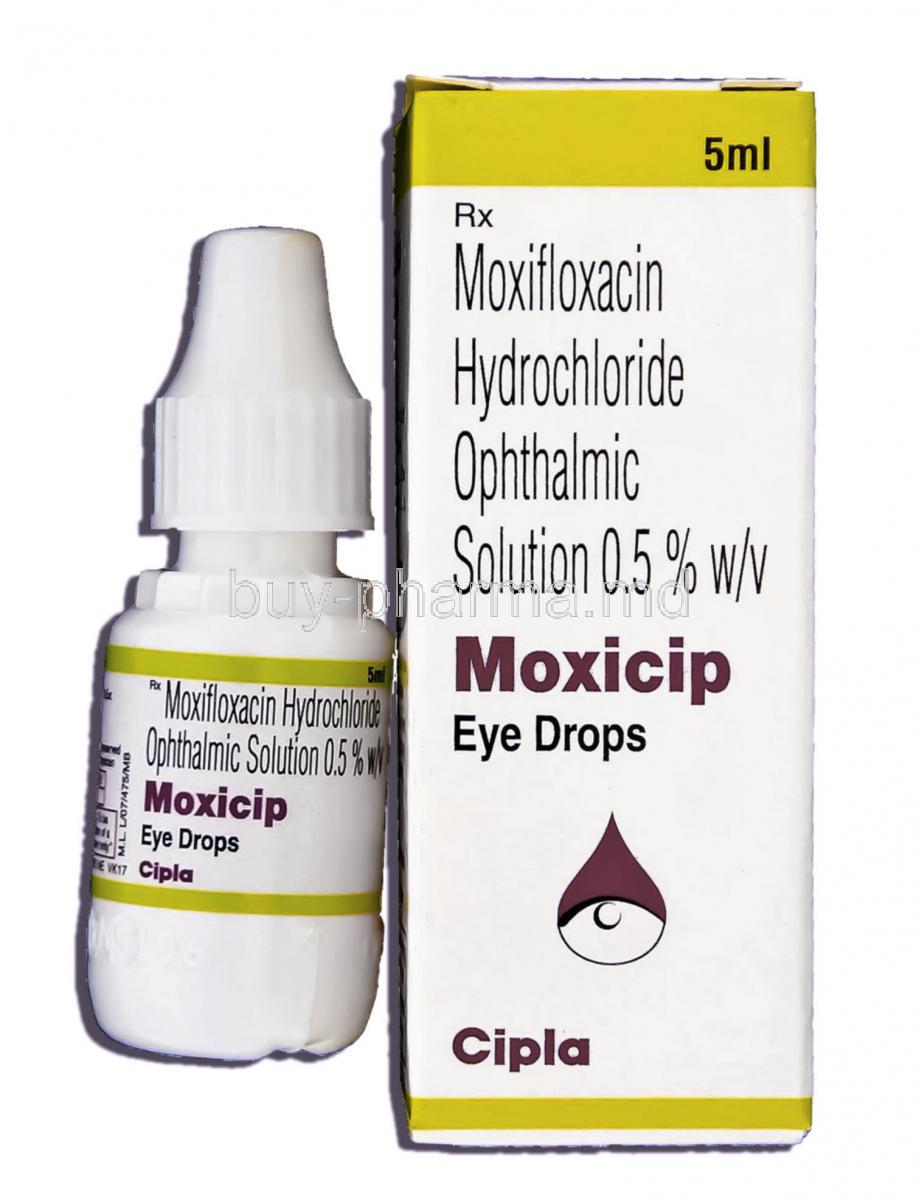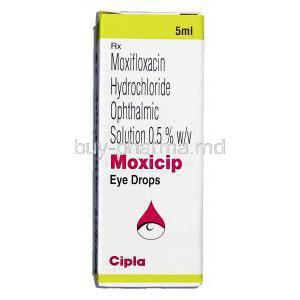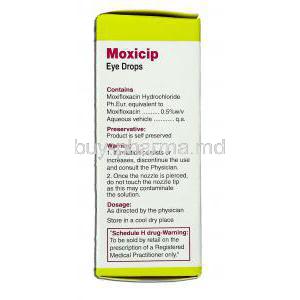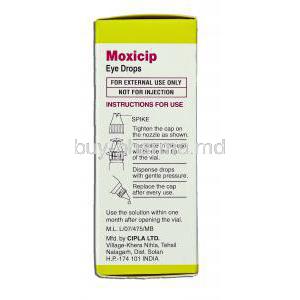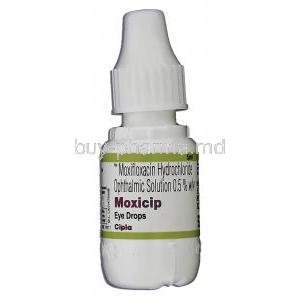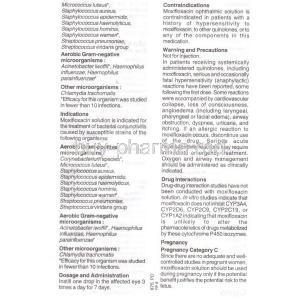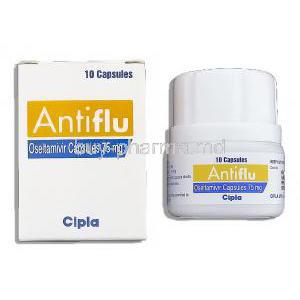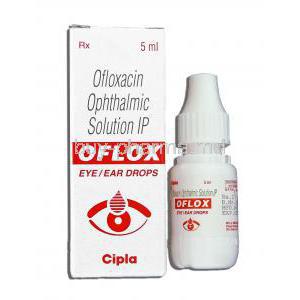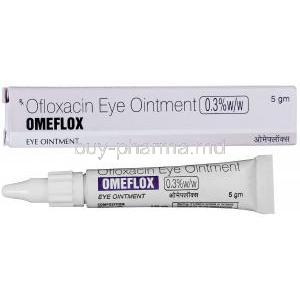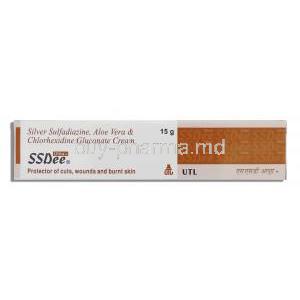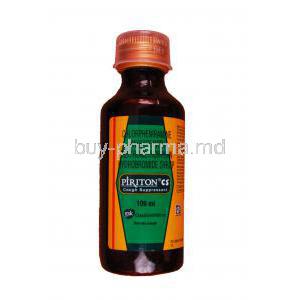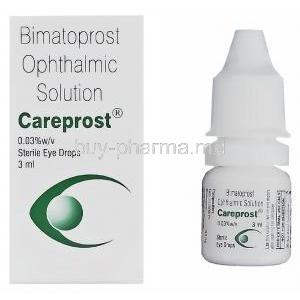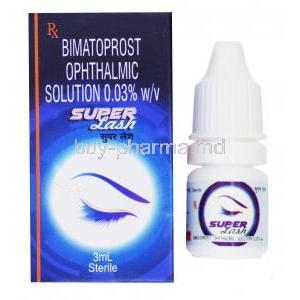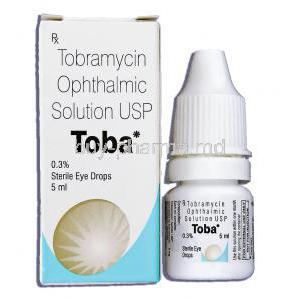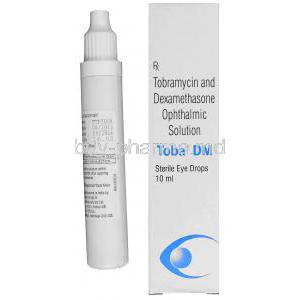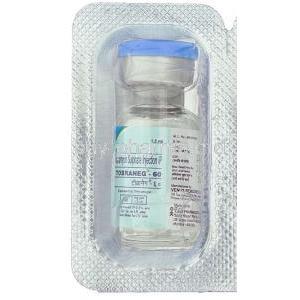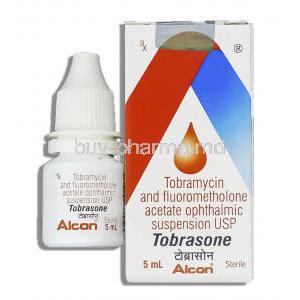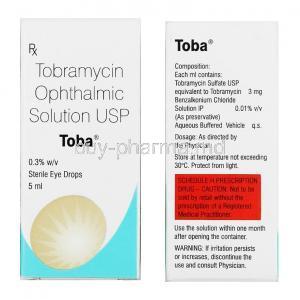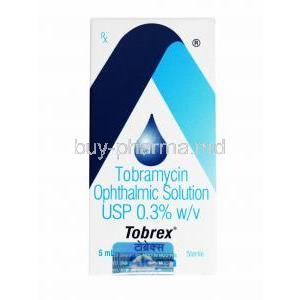Moxifloxacin
- II. Composition of Moxifloxacin Eye Drops
- III. How Moxifloxacin Eye Drops Work
- IV. Primary Uses of Moxifloxacin Eye Drops
- V. Off-label Uses of Moxifloxacin Eye Drops
- VI. Dosage and Administration Guidelines
- VII. Careful Administration and Important Precautions
- VIII. Special Population Administration
- IX. Side Effects of Moxifloxacin Eye Drops
- X. Overdosage: Symptoms and Treatment
- XI. Interactions with Other Medications
- XII. Warnings and Contraindications
- XIII. Storage and Handling Precautions
A. Overview of Moxifloxacin
Moxifloxacin, a well-known name in treating bacterial infections, is classified as a member of the quinolone family of antibiotics. Its primary role is to inhibit the enzymes DNA gyrase and topoisomerase IV in bacteria, which are essential for DNA replication. As a result, Bacterial growth and propagation are hindered, leading to effective relief from bacterial infections. Due to its excellent tissue penetration and high bioavailability, Moxifloxacin is widely used in various medical fields as a versatile antibiotic.(1)
1. "Moxifloxacin" - MedlinePlus - U.S. National Library of Medicine
B. Historical Development and Significance of Moxifloxacin
Moxifloxacin is a groundbreaking broad-spectrum antibiotic. Emerged in the early 1990s, and forever changed the field of pharmaceuticals. It all began with Bayer AG, a respected multinational pharmaceutical company based in Germany. They were introducing this remarkable drug to the market as Avelox. Moxifloxacin's arrival marked a turning point in the treatment of bacterial infections as it possessed an extraordinary ability to combat both Gram-positive and Gram-negative bacteria. Furthermore, its impeccable safety record and limited adverse reactions cemented Moxifloxacin as an indispensable asset in antimicrobial therapy.
II. Composition of Moxifloxacin Eye Drops
A. Active and Inactive Ingredients
Moxifloxacin eye drops consist of a harmonious combination of active and inactive ingredients. The primary active component, Moxifloxacin hydrochloride, effectively fights bacterial infections. Working alongside this active ingredient are several inactive elements that contribute to the overall effectiveness of the product.
- Boric acid, For instance, Provides pH stability.
- While sodium chloride helps maintain isotonicity.
- Hydrochloric acid and/or sodium hydroxide ensure the proper balance of pH levels.
- And distilled water acts as a solvent in the eye drops.
B. How Ingredients Contribute to the Efficacy of the Drug
The effectiveness of Moxifloxacin eye drops is greatly attributed to the strategic combination of its ingredients. The active ingredient, Moxifloxacin hydrochloride, leads the charge, effectively halting bacterial DNA synthesis and ultimately restraining bacterial growth. Concurrently the inactive ingredients also have crucial roles to play. Boric acid ensures that the solutions' pH remains stable. While sodium chloride helps preserve isotonicity, which is essential for enhancing ocular comfort. Additionally, hydrochloric acid and sodium hydroxide are utilized to maintain an optimal pH range, and distilled water serves as the medium through which all these components work synergistically together.
III. How Moxifloxacin Eye Drops Work
A. Mechanism of Action on a Cellular Level
Moxifloxacin functions through a dual mechanism of action within cells. It first inhibits the activity of DNA gyrase, an enzyme that plays a crucial role in the supercoiling of bacterial DNA. Thereby blocking its replication process. Additionally. It hinders the functioning of topoisomerase IV, an enzyme essential for separating replicated DNA. This combined effect disrupts bacterial DNA synthesis and partitioning, ultimately causing bacterial death and effectively stopping the infection.
B. Timeframe of Action: Onset, Peak, and Duration
Due to their well-designed formulation, Moxifloxacin eye drops Show a quick response. Patients often experience relief of symptoms within the initial 24 hours after using them. The maximum effect is generally seen between 2 to 6 hours after application. The potency of the medication persists, bringing relief for a more extended period. Usually up to 24 hours after the last dose. However, This duration may differ depending on the seriousness of the infection and an individual's unique physical traits.
IV. Primary Uses of Moxifloxacin Eye Drops
A. Approved Conditions and Treatments
Moxifloxacin eye drops are a powerful tool in ophthalmic care, effectively treating various bacterial ocular infections. These drops have been approved by the Food and Drug Administration (FDA) and are primarily used to treat conditions such as keratitis, conjunctivitis, and corneal ulcers. (1)
- Keratitis is an inflammation of the cornea that is often caused by bacterial infections. (2)
- Conjunctivitis, commonly known as "pink eye," is an inflammation or infection of the membrane lining the eyelid and the white part of the eyeball. (3)
- Corneal ulcers are open sores on the cornea that typically result from severe bacterial or fungal infections. (4)
The wide range of applications for these eye drops, From acute to chronic bacterial infections, Highlights their versatility in therapy. (5)
1. "Moxifloxacin Ophthalmic: MedlinePlus Drug Information" - MedlinePlus - U.S. National Library of Medicine
2. "Keratitis" - American Academy of Ophthalmology
3. "Conjunctivitis" - American Optometric Association
4. "Corneal Ulcer" - National Eye Institute - National Institutes of Health
5. "Moxifloxacin Eye Drops in the Treatment of Bacterial Eye Infections: a Review" - NCBI
B. Impact on Bacterial Eye Infections
Moxifloxacin eye drops have a profound and expedient impact on bacterial eye infections. By eliminating bacteria at the cellular level, these drops effectively relieve ocular discomfort, redness, and inflammation - which are key symptoms of such infections. Additionally, they accelerate the healing process reducing the duration of infection and preventing potential complications. Moreover, these eye drops greatly decrease the likelihood of recurrent infections by decimating the bacterial population, thus ensuring future ocular health. The exceptional effects of Moxifloxacin eye drops revolutionize the ophthalmology therapeutic approach and establish it as an essential tool in combating bacterial eye infections.
V. Off-label Uses of Moxifloxacin Eye Drops
A. Uncommon but Recognized Treatments
Moxifloxacin eye drops are primarily used to combat bacterial ocular infections. However, they have been found to be effective in treating other conditions as well. Clinicians often use these drops for off-label purposes, Taking advantage of their broad-spectrum antibacterial abilities. Some notable off-label uses include
- The use of these drops as a preventive measure before ocular surgery, To prevent bacterial growth and potential infections after the surgery.
- Some practitioners employ these drops for managing ocular manifestations of tuberculosis even though it is considered unconventional.
- Moxifloxacin drops have proven to be effective in managing chronic blepharitis, which is inflammation of the eyelid margins. This can be attributed to their potent anti-inflammatory properties.
The various applications of Moxifloxacin eye drops highlight their versatility and extended utility beyond conventional uses.
B. Research and Studies Supporting Off-label Uses
Scientific research plays a crucial role in confirming the expanded uses of drugs, and this is undoubtedly the case for Moxifloxacin eye drops. Numerous studies provide evidence for their effectiveness in various applications. For instance, A study published in the American Journal of Ophthalmology supports the use of Moxifloxacin to prevent endophthalmitis, A serious eye infection can occur after cataract surgery.
Similarly, The British Journal of Ophthalmology reported positive outcomes when using Moxifloxacin to manage ocular tuberculosis. Additionally, a study conducted by the Wilmer Eye Institute showed significant improvement in symptoms of chronic blepharitis with the use of Moxifloxacin eye drops. This strong scientific support validates these drops' use for other purposes But also suggests that Moxifloxacin has excellent potential to redefine therapeutic boundaries in ophthalmic care.
VI. Dosage and Administration Guidelines
A. Standard Dosing Parameters
The appropriate dosage of Moxifloxacin eye drops can differ based on the specific condition being treated. In the case of bacterial conjunctivitis, A typical treatment involves administering one drop in the affected eye(s) every 2 hours while awake over a span of two days. This is then followed by one drop in the eye(s) every 4 hours while awake for the subsequent five days. However, It is important to consult with a healthcare professional for accurate dosage information as individual circumstances may vary.
B. Factors Affecting Dosage (Severity of Condition, Age, Other Health Factors)
The administration of Moxifloxacin eye drops is a complex process influenced by numerous factors. One crucial factor to consider is the severity of the patient's condition. In cases of more severe infections, a more frequent dosing schedule or a longer course of therapy may be necessary. Another factor to take into account is the patients' age. Pediatric and geriatric populations may require adjustments to the dosage due to physiological differences compared to adults.
Furthermore, other health factors should be considered. Patients with compromised immune systems or coexisting ocular conditions might require a customized dosage regimen. To ensure optimal dosage for each patient, It is crucial to seek guidance from a healthcare provider who can assess these individualized factors and provide appropriate recommendations.
C. Correct Administration Technique
Properly administering Moxifloxacin eye drops is essential to achieve optimal effectiveness. The procedure involves a few simple steps:
- Tilt your head slightly backward and gently pull down your lower eyelid to form a small pocket.
- Position the dropper above your eye.
- Release a single drop.
- And then close your eye.
- Apply light pressure with your finger on the inner corner of your eye for approximately one minute to prevent the liquid from flowing into the tear duct.
VII. Careful Administration and Important Precautions
A. Monitoring for Allergic Reactions
While Moxifloxacin generally enjoys good tolerance levels among patients taking it, it cannot be stressed enough how vital it is to monitor for any potential signs of an allergic reaction actively. Some indicative symptoms encompass hives formation and experiencing difficulty breathing accompanied by swelling in areas like the face, lips, tongue, and throat showing bloating changes. It should not be taken lightly, so immediate medical attention should essentially be sought at its earliest recognition.
B. Precautions for Patients with Existing Medical Conditions
Patients with preexisting medical conditions, Particularly those that impact the eye, Should exercise caution when using Moxifloxacin eye drops. Individuals with a history of ocular surface disease, corneal abrasion, or dry eye syndrome may find their symptoms worse. Therefore, these patients should consult with their healthcare provider before starting treatment with these drops.
C. Eye Care and Hygiene During Treatment
It is of utmost importance to uphold meticulous eye hygiene while undergoing treatment with Moxifloxacin eye drops. Prior to administering the drops, it is crucial to wash your hands thoroughly to prevent any contamination. It is essential to refrain from allowing the dropper tip to come into contact with any surface, including your eye and hands. It is advisable for patients to avoid wearing contact lenses unless specifically instructed otherwise by their healthcare provider as they have the potential to harbor bacteria and worsen the infection.
VIII. Special Population Administration
A. Administration to Elderly
It is important to approach the administration of Moxifloxacin eye drops with caution when dealing with geriatric patients due to their compromised tear production system. The susceptibility of these individuals to severe dry eye syndrome necessitates a tailored dosing regimen that prevents any exacerbation of their condition further. Furthermore, taking into account common co-morbid ocular conditions like glaucoma or macular degeneration in older adults emphasizes the need for prudently evaluating if this drug is appropriate for them.
2. Elderly-specific Side Effects
Due to their unique physiological attributes, it is essential to acknowledge that elderly patients have a predisposition towards heightened sensitivity when it comes to specific side effects related to Moxifloxacin usage. Such reactions could manifest as ocular discomfort or dry eyes appearing more pronounced than in other demographics. Furthermore, there exists an inherent possibility for this patient group to experience an elevated risk associated with systemic absorption, which might result in potential issues like dizziness or modifications in heart rhythm. However, by incorporating regular monitoring procedures alongside timely intervention strategies these risks above can be effectively mitigated.
B. Administration to Pregnant Women and Nursing Mothers
1. Potential Risks and Benefits
When it comes to using Moxifloxacin eye drops during pregnancy. One should proceed cautiously and weigh the potential benefits against possible risks to the fetus, despite relatively low systemic absorption of this drug after applying it directly to the eyes. Exercising caution remains essential. If you are a nursing mother, remember that Moxifloxacin is excreted in breast milk. Hence before deciding on using these eye drops, a thorough analysis considering both risks and benefits is recommended.
2. Research on Use During Pregnancy and Lactation
Limited research has been conducted on the use of Moxifloxacin eye drops during pregnancy and lactation. Animal studies have not revealed any direct or indirect harmful effects of reproductive toxicity. Nonetheless, no sufficient and well-controlled studies in pregnant women or nursing mothers have been carried out. Therefore. Healthcare professionals should rely on their clinical judgment when deciding whether to use this medication in these particular populations.
C. Administration to Children
1. Pediatric Dosage Guidelines
The prescribing doctor determines the usage and dosage of Moxifloxacin eye drops in pediatric patients. It is essential to consider that children may be more susceptible to medication side effects thus it is recommended to use the minimum effective dose. Ongoing monitoring of pediatric patients is necessary to ensure desired treatment outcomes while also being vigilant for any possible adverse effects.
2. Pediatric Side Effects and Safety Considerations
Pediatric patients may encounter comparable side effects to those experienced by adults, such as eye irritation, dryness, or discomfort. It is worth noting that in uncommon instances, children may be more prone to systemic side effects like gastrointestinal disturbances. Due to systemic absorption. As a result. It is crucial to monitor the use of Moxifloxacin eye regularly drops in the pediatric population to ensure their safety.
IX. Side Effects of Moxifloxacin Eye Drops
A. Common Side Effects
Moxifloxacin eye drops possess remarkable therapeutic abilities. Although they may occasionally bring about common side effects that generally improve without intervention. These side effects can manifest as
- Ocular discomfort, which may present as a burning or stinging sensation shortly after applying the drops.
- Visual disturbances such as blurred vision or a temporary decrease in visual acuity.
- Eye redness is frequently observed as an inflammatory reaction. But it typically diminishes over time.
B. Serious, but Less Common, Side Effects
Occasionally, There may be instances where more serious side effects arise and prompt immediate medical attention. These can encompass allergic reactions, characterized by symptoms such as facial, lip, tongue, or throat swelling, breathing difficulties, or a severe rash. Additionally, severe ocular pain that persists or worsens necessitates prompt intervention. Finally, any alterations in vision including sudden changes or vision loss also require immediate medical attention.
C. Procedures in the Event of Side Effect Occurrence
Should any side effects arise, patients must cease using Moxifloxacin eye drops without delay and seek medical guidance. A healthcare professional will assess how severe these side effects are and decide on the best course of action, which may entail stopping the use of the drug or modifying its dosage.
X. Overdosage: Symptoms and Treatment
A. Identifying Signs of Overdosage
Excessive use of Moxifloxacin eye drops can result in worsened side effects. Patients might feel heightened ocular discomfort, excessive tearing, or even exhibit signs of an allergic reaction. Although the chances are extremely rare due to minimal absorption into the body, systemic symptoms like nausea or dizziness might occur.
B. Immediate Actions and Necessary Medical Treatment
If a patient experiences an overdose, it is advised that they promptly discontinue the use of the eye drops and seek urgent medical attention. The healthcare provider can help by using saline to rinse the eyes and remove any excess medication. Additionally, they may administer symptomatic treatment to address any adverse effects.
XI. Interactions with Other Medications
A. Known Drug-Drug Interactions
Although Moxifloxacin typically does not have significant drug interactions. It is advised to use caution when combining with other eye drops. Particularly those that contain divalent or trivalent cations like zinc, calcium, or magnesium. Such ions can create chelates with Moxifloxacin hindering its absorption and diminishing its effectiveness.
B. Potential Food-Drug and Alcohol-Drug Interactions
The likelihood of food drug or alcohol drug interactions with Moxifloxacin eye drops is low because these drops have minimal absorption into the body, nonetheless, As a precautionary measure. Patients should refrain from consuming alcohol while undergoing treatment as it may potentially worsen side effects like dizziness or blurred vision.
XII. Warnings and Contraindications
A. Specific Health Conditions that May Contraindicate Use
While Moxifloxacin is typically well tolerated, there are certain health conditions that may make its use inappropriate. For example,, individuals with a known hypersensitivity to Moxifloxacin or other quinolones should avoid using this medication. Moreover, those who have viral infections of the cornea and conjunctiva, such as epithelial herpes simplex keratitis (dendritic keratitis) vaccinia, and varicella should not use Moxifloxacin.
B. Situations in Which Moxifloxacin Should Be Avoided
In addition to the contraindications mentioned earlier. It is essential to exercise caution when using Moxifloxacin in certain situations. One such situation is contact lens wear. If you have signs or symptoms of bacterial conjunctivitis or are undergoing therapy with Moxifloxacin, it is advised not to wear contact lenses. This is because wearing contact lenses in such cases can further aggravate the condition. Another consideration is the prolonged use of Moxifloxacin, which may lead to the overgrowth of nonsusceptible organisms, including fungi, in the event of a superinfection. Appropriate treatment should be promptly initiated to address the issue at hand.
XIII. Storage and Handling Precautions
A. Ideal Storage Conditions for Moxifloxacin
Moxifloxacin eye drops should be stored at room temperature, which is typically between 15 to 25 degrees Celsius (59 to 77 degrees Fahrenheit). To maintain its effectiveness, it is essential to keep the container tightly closed and protect the solution from direct sunlight and freezing. Additionally, it is crucial to prevent any contamination of the dropper tip to maintain the sterility of the solution.
B. Guidelines for Safe and Effective Handling
Proper handling of Moxifloxacin eye drops is crucial for maintaining their effectiveness and ensuring patient safety. To prevent contamination. It is essential for users to avoid touching the dropper tip with their hands or any surface. Additionally, it is advisable to discard any remaining solution after completing the prescribed course of therapy. Lastly, users should always make sure to close the bottle after each use tightly.

